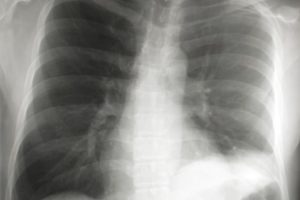The hazards of crystalline silica have been known for a long time. In 1938, in one of the earliest workplace safety videos, then-Secretary of Labor Frances Perkins encouraged employers to protect workers against deadly silica exposures, using many of the same methods that are recommended today. But more than two million American workers remain at risk of exposure.
In March 2016, the Occupational Safety and Health Administration (OSHA) issued two new standards requiring employers to protect workers against respirable crystalline silica exposures—the first time the standards had been updated since 1971. Enforcement of the construction standard began on September 23, 2017, and enforcement of most provisions of the general industry and maritime standard will begin on June 23, 2018.
In order to assist employers with compliance, OSHA has updated its silica page, compiling all information and guidance in one spot. The updated page contains information on silica sampling and analysis, health effects of silica exposure, and answers to frequently asked questions.
Fouling the Air
Crystalline silica is a naturally-occurring, extremely common mineral found in the earth’s crust. It is used in many building materials, including sand, stone, concrete, and mortar, as well as consumer products like glass, pottery, ceramics, bricks, and artificial stone.
The vast majority of silica exposures are to particles too large to cause health problems for humans—walks on the beach and sandbox play are unlikely to create a health hazard. But construction and manufacturing activities create very small particles of silica—at least 100 times smaller than ordinary sand. These particles are respirable—they can be breathed deep into the lungs.
OSHA has identified activities that can create respirable silica particles in dangerous quantities, including:
- Abrasive blasting with sand
- Sawing brick or concrete
- Sanding or drilling into concrete walls
- Grinding mortar
- Manufacturing brick, concrete blocks, stone countertops, or ceramic products
- Cutting or crushing stone industrial sand used in certain operations, such as foundry work
- Hydraulic fracturing (fracking)
Beyond Silicosis
Frances Perkins’ 1938 video identified silicosis as a deadly hazard, and the disease still kills about 100 workers every year. But much more is now known about the potential health effects of respirable silica exposure. Workers who inhale these very small crystalline silica particles are at increased risk of at least four serious silica-related diseases, including:
- Silicosis, which causes progressive and incurable scarring of the lungs.
- Lung cancer—it is listed as a known carcinogen by both the National Toxicology Program (NTP) and the International Agency for Research on Cancer (IARC).
- Chronic obstructive pulmonary disease (COPD)—a term that describes the combined presentation of chronic bronchitis and emphysema.
- Kidney disease—end-stage kidney disease, which requires dialysis or a transplant, is twice as common in silica-exposed workers as in the general population.
Tomorrow, we’ll look at the exemptions in OSHA’s construction industry standard for silica.

